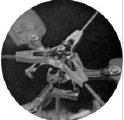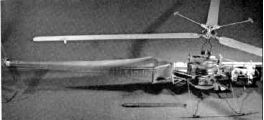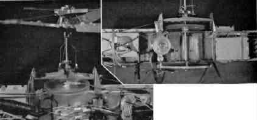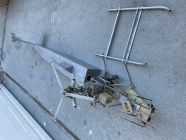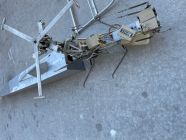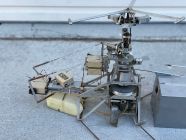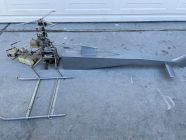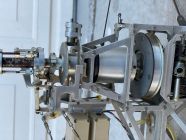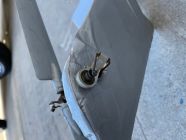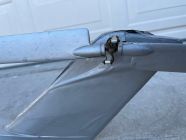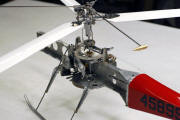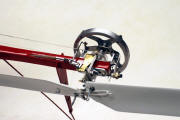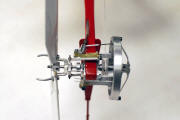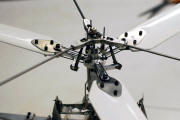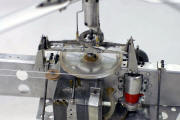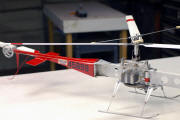John Burkam
John Burkam XH-51A
John Burkam, a development Engineer with Boeing whose specialisation was vibration reduction and rotor design, had been working on a radio controlled Helicopter and in late 1965 completed the drawings for such a machine; though it wasn't until 1967 that RC Modeller magazine published them.
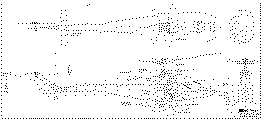
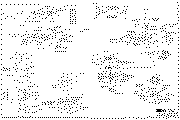
John Burkam XH-51A Construction drawings. Build instructions.
This was the 'simplified' version from the original drawings and included 'rigid' rotors, full proportional radio control of all axis and Autorotation. It had a three blade rotor with diameter 70 inch's incorporating a three leg 'Lockheed' stabiliser. Power was from a Veco 45 and quoting theoretical value of 15 Lbs lift maximum; extremely well thought out but theoretical only.
The rigging and testing section is of interest in that it recommends testing the clutch assembly to prove it holds together and if it doesn't....???? make it again with more screws. The trimming section is also very interesting requiring someone to hold the model overhead when it is running in order to properly set up the phasing etc. Finally a very forward thinking note (even before actual success of an RC helicopter) that rigid rotors should be capable of inverted flight.
It would appear that at the time the XH-51A drawing were published, the challenge of building the model was not taken up (not even the designer???) though a few were later built and one specifically in 1968 by Gene Rock. Gene's own comments vindicates the conclusion above regarding mechanical complexity and the need to be an experienced machinist to achieve the necessary accuracy. The resulting vibration and lack of helicopter flying experience meant that the venture was not successful; no other info held on the other builders. From the specifications of later RC helicopters it would also appear the engine size was too optimistic and would have needed a '60' to achieve an actual figure of 15 Lbs lift. Due to scale effects would the rotor stabilisation system have actually resulted in a follow up rate that a human could control though I suspect if the gyro was made heavy enough it would? Rotor control speed was to prove a major stumbling block for others who did not use stabilisation (more on that later). To sum up, an excellent design incorporating many advanced features and a sign of things to come but it required skills that were generally not yet available to achieve successful flight so it was obviously not the answer; at that time anyway.
John Burkam Super Suzie
John Burkam at the twelfth annual DC/RC symposium in May 1969 gave a lecture on RC helicopters and rotor design plus flying one of his 'free flight' helicopters in the auditorium. John had with him his radio controlled helicopter "Super Suzie" which weighed a little over two pounds and was powered by a Cox Tee Dee 049 glow engine. It had a 3 foot diameter, 3 blade main rotor with collective pitch and spring precessed 'Lockheed' gyro, utilised Bonner 4RS radio equipment as that was the smallest available at the time plus a miniature mechanical rate gyro for tail rotor stabilisation (needed with collective pitch??). reported not to have a clutch so once the engine was running then it kept going until it ran out of fuel. Ray Jaworski (???) also had his helicopter (no details held??) and at the meeting both were persuaded to try for a 'world' record. Despite the bad weather, John managed a near 6 second flight with his; this was witnessed by a number of people, Horace Hagen being one of them so it was submitted and accepted by the AMA then the FAI for the first helicopter duration.
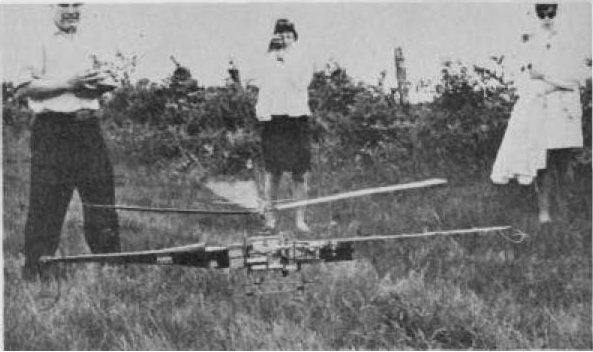
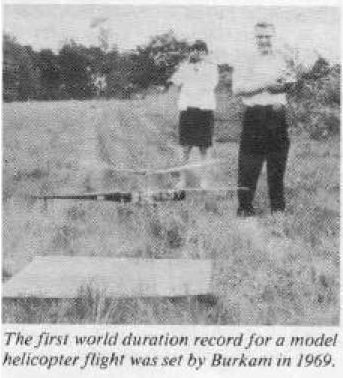
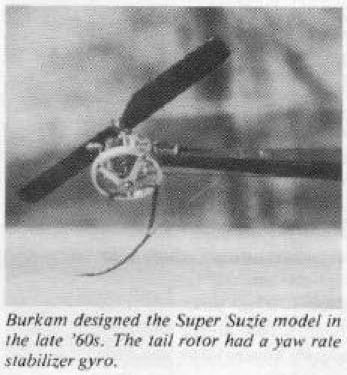
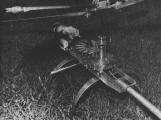 1971 test bed for mechanics set (no further info held).
1971 test bed for mechanics set (no further info held).
Super Suzie (restored 2011)
Super Suzie restored courtesy of Gene Rock.
